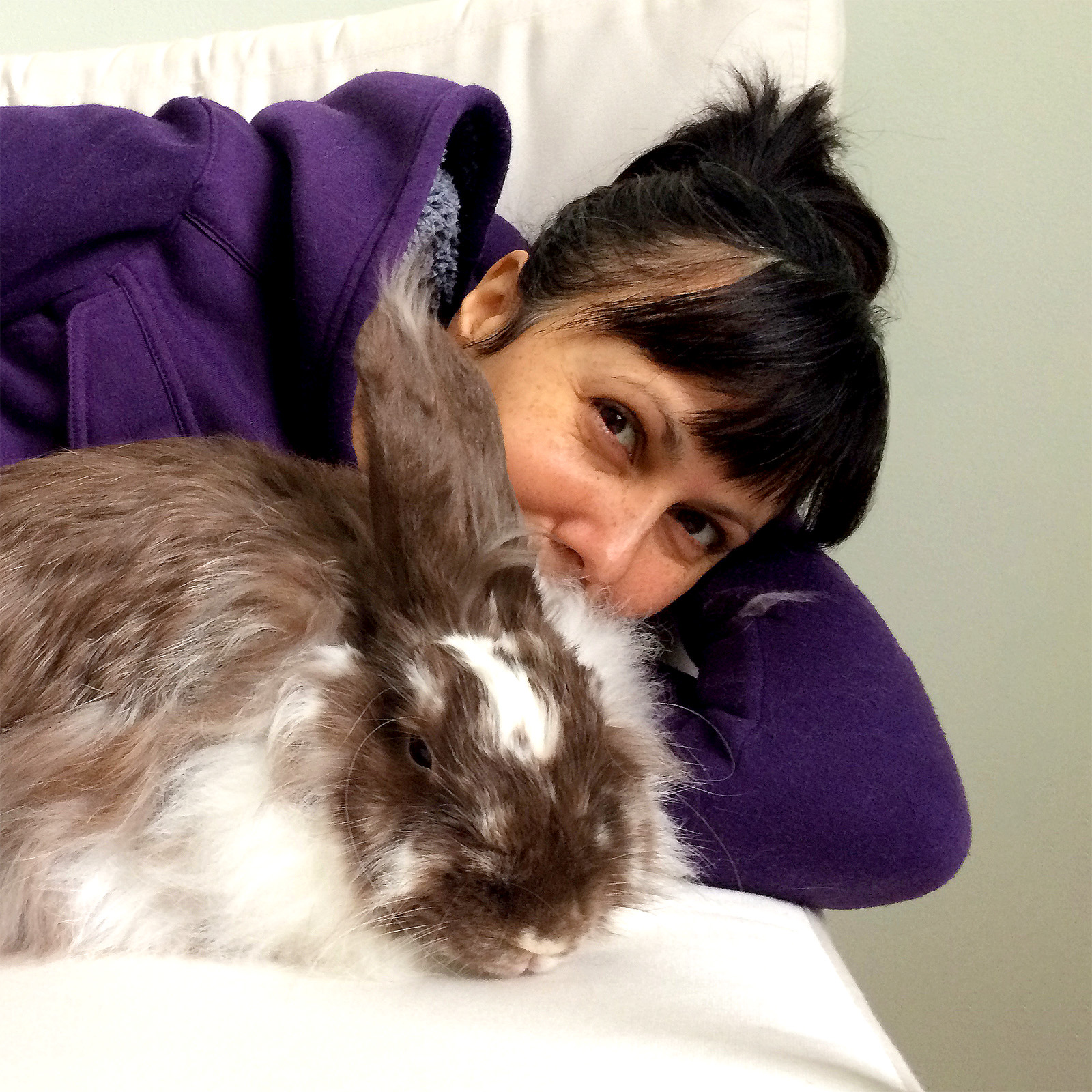Can rabbits and dogs be friends? Yes, but everything hinges on the dog’s prey drive. For a successful interspecies household, a dog must have a low prey drive and must not be interested in chasing and killing small animals/wildlife. A low prey drive dog is gentle with other animal species, even in play. Introducing dogs and rabbits should be done with caution and preparation.
Look for these dog traits:
- Low prey drive is REQUIRED
- Dog follows basic commands such as ‘sit’, ‘down’, ’stay’, and ‘leave it’
- Calm, submissive dog
- Adult dog (puppies are untrained and unable to control their exuberant behavior)
- Herding, non-sporting, and working dog breeds are a good place to start. Generally speaking, avoid sporting breeds as these dogs have been bred to hunt. Avoid toy breeds if the dog is high strung or anxious. Breed recommendations are generalities to use as a baseline. Individual personalities are most important to determine compatibility.
- A trained service dog or therapy dog
Rabbits who are good candidates for a canine friend:
- Outgoing, confident bunnies
- Relaxed, easy-going bunnies
- A shy, fearful rabbit is not a good choice.
Set Up For Success:
- Never allow a dog to meet a rabbit who’s confined inside a cage. Instead, allow the rabbit to freely explore the dog while the dog is lying down and on leash.
- Keep sessions short and gradually extend supervised introductions.
- Proceed slowly. Take your time and have patience.
- The safety of your rabbit is your top priority during this process.
- Use positive reinforcement and be consistent.
- Establish yourself and your rabbit at the top of the pack hierarchy.
See our Dog Training: A Guide to Commands and Skills for Living with a House Rabbit article for more details.
Once They Are Friends:
- Always provide escape routes for both species (a place the rabbit can escape to if she feels threatened by the dog, a place the dog can go to escape a pestering rabbit).
- Always keep separate feeding areas.
- Never allow your dog to chase your rabbit, even in play.
- Supervision is required until 100% trust has been achieved.
If you have a high-prey drive dog (or cat) please think twice. Keeping a high prey drive dog or cat separated from a pet rabbit is critical but difficult and dangerous. A split-second accident can be fatal for the rabbit. If you think a dog or cat is not trustworthy with a small animal trust your gut. Trying to keep them forever separated in the same home is incredibly high risk, and this approach has failed many times.
It is possible for some dogs and rabbits to be friends and companions but the road to get there is risky and requires a serious investment of your time and patience.
Resources:
- When Fido Met Thumper – Thoughts on Rabbits and Dogs as Companions
- Rabbits Living With Other Pets (Rabbit Welfare Association & Fund) https://rabbitwelfare.co.uk/rabbits-living-with-other-pets/
- Animal Welfare Association PDF https://awanj.org/wp-content/uploads/Rabbit-Handout-08-Dogs-and-Rabbits-Introduction.pdf
- Dog Meets Bunny Blog http://dogmeetsbunny.blogspot.com/

